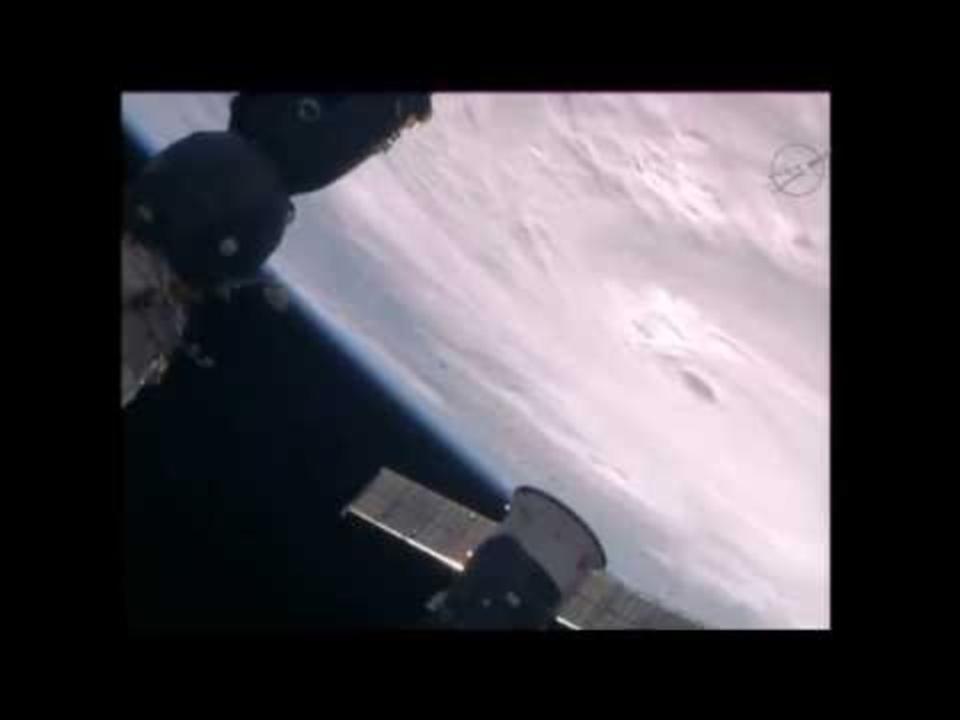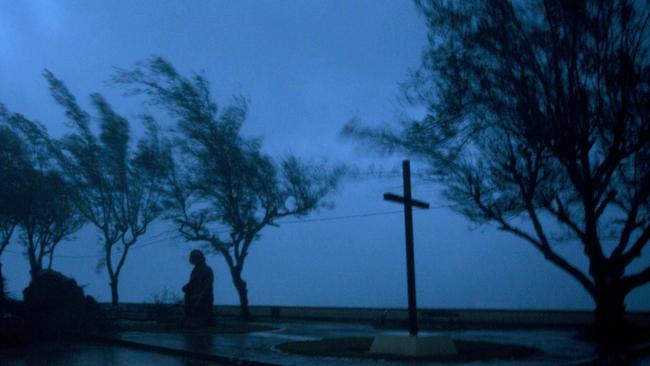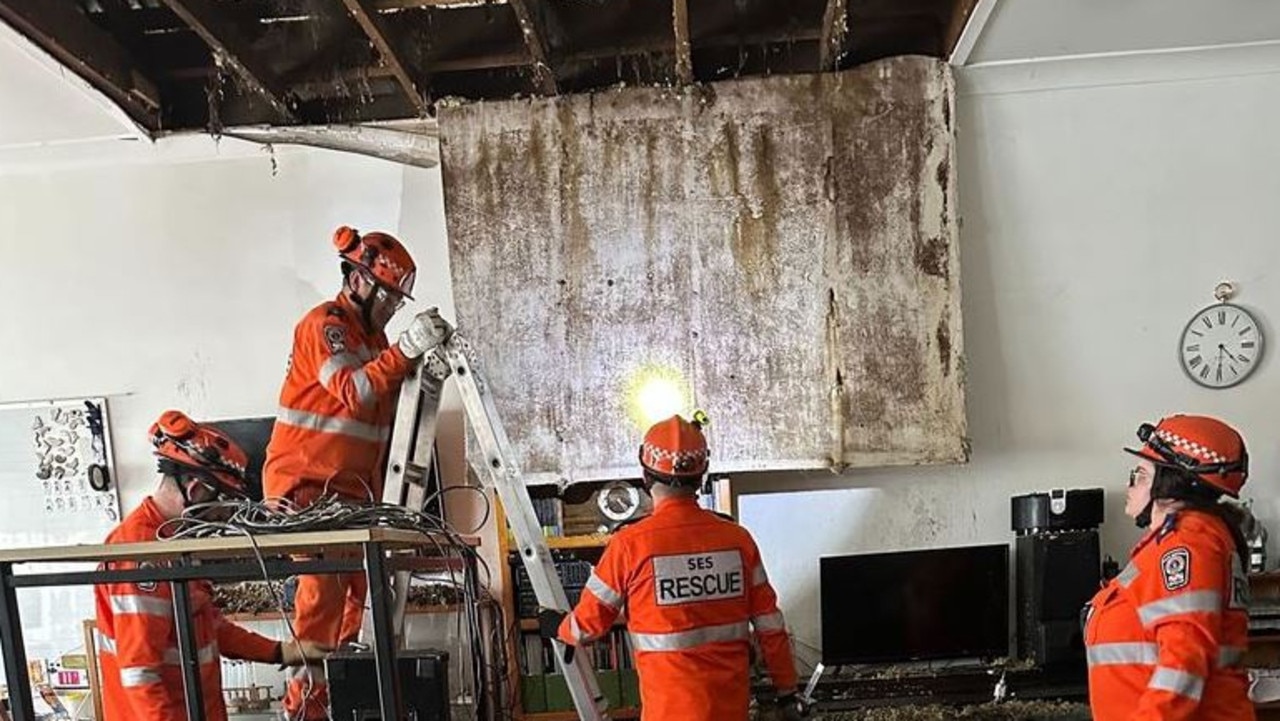NASA catches Hurricane Matthew’s deadly power, from space
AS IT cuts a path across the Caribbean and takes aim at the US, NASA has revealed what Hurricane Matthew looks like from space.

technology/environment
Don't miss out on the headlines from technology/environment. Followed categories will be added to My News.
IT’S the biggest and most deadly hurricane to hit the Caribbean in almost a decade, and now footage captured from the International Space Station shows just how intense a Category 4 storm really is.
NASA released footage from space as deadly Hurricane Matthew sent devastating wind and torrential rainfall into Haiti’s southern coast on Tuesday.
The footage captured from 400km above the Earth has been sped up to four times the normal speed and shows the sheer size and the orbital complex of the storm, which left a path of destruction through the impoverished Caribbean island.
At the centre of all the fury is the calm eye of the storm, which only highlights the power and fury around it.
Hurricane Matthew, the Caribbean’s worst storm in nearly a decade, has pounded Haiti killing at least 11 people, and has moved on to Cuba, unleashing floods forcing hundreds of thousands to flee, and is now taking aim at the US.
The monster storm slammed into Haiti’s southwestern tip with howling wind, knocking down trees and tearing off roofs while inundating neighbourhoods.
By nightfall on Tuesday (Wednesday morning AEDT), at least 11 deaths had been blamed on the powerful storm during its week-long march across the Caribbean.
But with a key bridge washed out, impassable roads and phone communication cut off with Haiti’s hardest-hit area, there’s no way to know how many people might be dead or injured.
The storm whipped at Cuba’s sparsely populated eastern tip on Tuesday night as it headed for a two-day run up the length of the Bahamas that will take it near the US coast.
Bahamas Prime Minister Perry Christie voiced concern about the potential impact on the sprawling archipelago off Florida’s east coast.
“We’re worried because we do not control nature,” he said.
SIX METRE WAVES, 220KM WINDS: STORM’S FURY
Forecasters say the eye of Hurricane Matthew made landfall near the eastern tip of Cuba as it continued its death march about 11am AEDT.
The US National Hurricane Center in Miami said the hurricane was packing maximum sustained winds of 220km/h, and six-metre waves had started pounding the seafront promenade of the isolated tower of Baracoa.
“They are getting everything a major hurricane can throw at them,” said meteorologist Dennis Feltgen.

US IN HURRICANE MATTHEW’S SIGHTS
The first evacuations have been ordered in the US East Coast as coastal dwellers prepare to flee the monster storm.
Forecasters said Matthew could hit Florida by Thursday night and push its way up the east coast at the weekend.
The forecast has triggered a rush by Americans to supermarkets, petrol stations and hardware stores, buying up groceries, water, plywood, tarps, batteries and propane and other emergency supplies.
Florida Governor Rick Scott urged coastal residents to prepare for the possibility of a direct hit and line up three days’ worth of food, water and medicine.
The Red Cross put out a call for volunteers in South Carolina, and the White House said relief supplies were being moved to emergency staging areas in the southeast.
South Carolina said it would start evacuating 1.1 million people from its coast starting Wednesday and try to get them at least 160km inland. Georgia declared a state of emergency in 13 counties.
“It’s not going to be a fast evacuation. It could take up to several hours,” South Carolina Governor Nikki Haley said. “If you can leave early, do that.”
Gas pumps are emptying and shops being reinforced and closing as residents prepare for the worst.
Officials in coastal Hyde County, North Carolina, have issued a state of emergency and ordered the mandatory evacuation of visitors to Ocracoke Island. Residents and property owners on the island will have an additional 24 hours to make preparations before they, too, will be subject to a mandatory evacuation on Thursday. Ocracoke Island’s beaches area is a tourist draw.
Motorists are rushing to fill up their tanks in coastal South Carolina. During rush hour long lines formed at petrol stations, snarling traffic as lines snaked out of gas stations and into travel lanes.
Meanwhile, the US Coast Guard announced that while the Port of Charleston remains open, large ocean-going vessels should be making plans to leave the port.

HAITI ‘HUMANITARIAN CRISIS’
A United Nations official says Hurricane Matthew has caused the biggest humanitarian crisis in Haiti since the devastating earthquake of 2010.
Hours after Matthew made landfall on Haiti’s now-marooned southwestern peninsula, government leaders said they could not fully gauge the impact. The mayor in flooded Petit Goave reported two people died there, including a woman who was killed by a falling electrical pole.
Four deaths were recorded in the neighbouring Dominican Republic and one each in Colombia and in St Vincent and the Grenadines.
Hurricane Matthew blew ashore around dawn in the poorest country in the western hemisphere, hitting a corner of Haiti where many people live in shacks of wood or concrete blocks.
Deputy Special Representative for Haiti, Mourad Wahba said in a statement that many people have been forced from their homes and communications systems have been knocked out in the country’s hard-hit southwestern peninsula.
He says at least 10,000 people are in shelters.
Haitian authorities had tried to move people from the most vulnerable areas before the storm, but many were reluctant to leave, and some sought shelter only after the worst was already upon them.

Aid organisations are bracing for “catastrophic damage” in the impoverished nation’s hardest hit regions, AFP reports.
“Some people who lived by the sea are walking with their things through flooded streets looking for somewhere to go,” said Iralien St. Louis, a photographer who was hunkered down at his home.
The United States Agency for International Development has dispatched an elite disaster response team to the poorest nation in the Americas.
In an interview with AFP, Jeremy Konyndyk, who heads USAID’s Office of US Foreign Disaster Assistance, said aid teams are preparing a “massive response”.
Mr Konyndyk said OFDA had its initial response team ready as of Friday, with supplies — including sanitation necessities and shelter kits — ready to go in Haiti and Miami, Florida.
Mr Konyndyk said Haitian airports are currently shut down, but OFDA will send more resources as soon as conditions permit.
“We anticipate it will be quite catastrophic, with severe damage to water availability and water infrastructure, which does raise the risk of waterborne diseases.”
Southern Haiti has been cut off from the rest of the country after the collapse of a vital bridge linking Port-au-Prince to the southern peninsula.
“The logistic hurdles are going to be immense,” Mr Konyndyk acknowledged. “Roads will be blocked all over — probably in large swathes of Haiti — but particularly in the most affected regions in the southwest of the country.”
Erosion is especially dangerous in Haiti because of high mountains and a lack of trees and bushes in areas where they have been cut for fuel.
“We’re expecting that landslides will block roads in various place,” Mr Konyndyk said.
Haiti is home to almost 11 million people, with thousands still living in tents in Haiti after the country’s massive 2010 earthquake.
Farmers in the country’s smashed south were just about to harvest their staple plantain crop, raising additional concerns about long-term economic impact and a lack of supplies to meet subsistence needs.

Originally published as NASA catches Hurricane Matthew’s deadly power, from space


